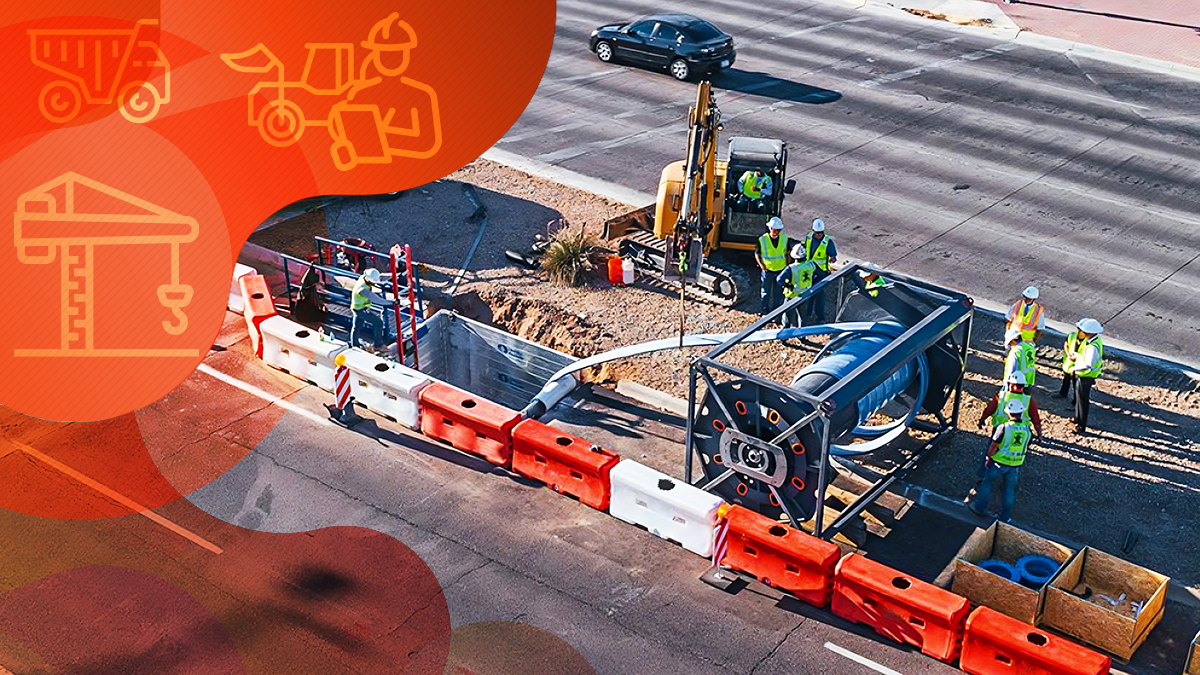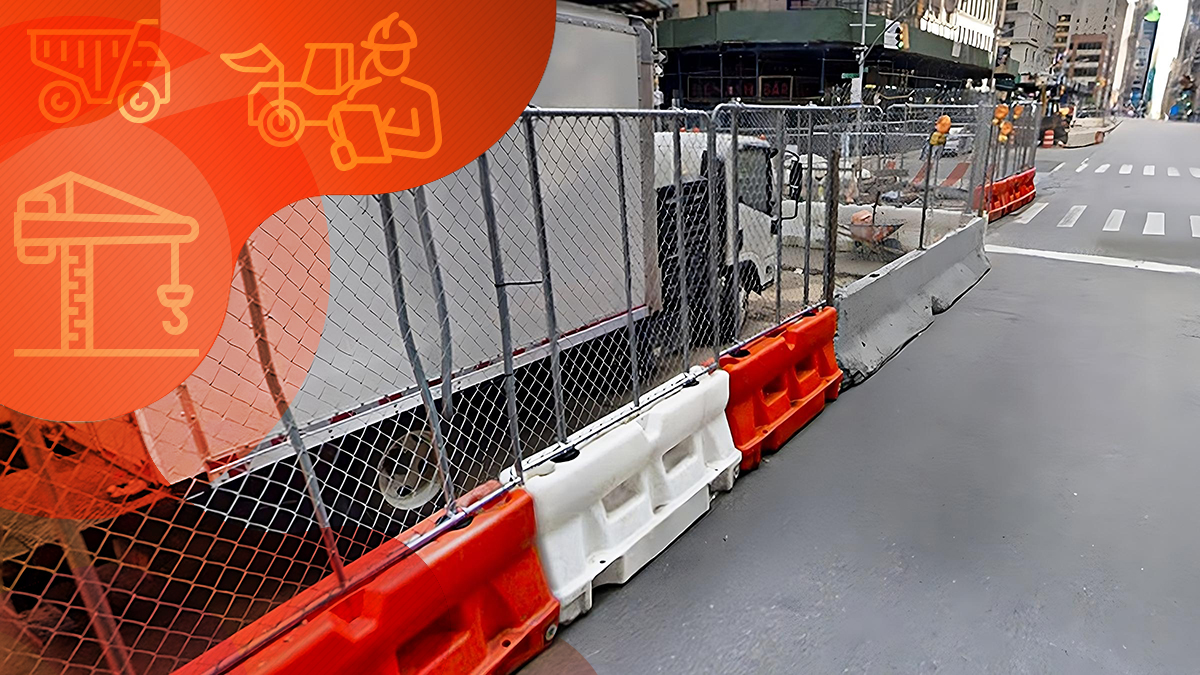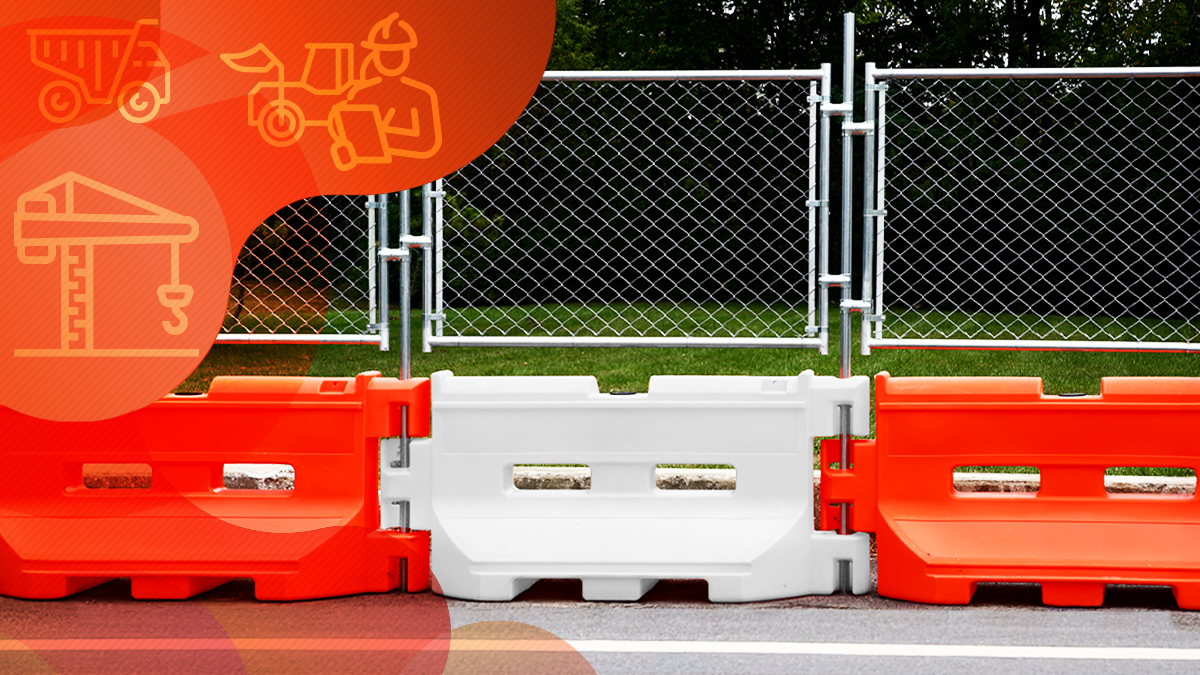Reducing Impact Damage with Water-Filled Plastic Jersey Barriers
Understanding the effects of barrier materials on vehicles and their occupants can help improve road safety.

Jersey barricades are safety devices designed to direct traffic around construction sites and to return vehicles to the roadway if there is a collision. They also prevent out-of-control vehicles from entering a job site.
For decades, concrete barriers have been deployed at road construction sites; however, water-filled plastic jersey barriers have emerged as a compelling alternative, offering greater flexibility, easier transportion, and reduced collision damage.
What Happens When Cars Collide with Concrete Barriers?
Car crashes are a matter of physics. Suppose a car collides head-on with a concrete safety barrier. Depending on the vehicle's size and speed, the car will sustain extensive damge, and its occupants' injuries could be fatal if seat belts and airbags are not used. What is left after impact reflects Newton's Third Law of Motion.
For every action, there is an equal and opposite reaction.
In other words, the concrete barrier pushes energy toward the car with the same force as the car's forward momentum. The resulting impact produces an accordion effect when the car crumples as it absorbs most of the accident's energy. If the concrete barrier could absorb some of the energy, the damage would be less.
Inside the car, the occupants remain in motion (Newton's First Law of Motion) until stopped by an external force such as a seat belt, airbag, or windshield. Because the driver and passengers continue to move forward after the initial impact, they may suffer added injuries if the energy cannot be dissipated.
According to the latest statistics, 65% of all work zone deaths were motor vehicle drivers and 18% were passengers. While barriers provide positive protection for workers, they contribute to over 700 driver and passenger deaths annually.


What Happens When Cars Collide with Water-Filled Barriers?
Suppose a car collides with a water-filled barrier instead of a concrete one. How does that change the crash outcome? Water-filled crash barriers absorb and dissipate energy from the car's impact, resulting in less gravitational pull and fewer injuries.
How Water-Filled Barriers Lessen Impact
Water-filled, plastic Jersey barriers apply the laws of motion to fluids to reduce the impact force of a collision. When cars crash into concrete barriers, it's like hitting a brick wall. There's very little give. All the energy produced by the collision flows back to the car.
When water is at rest, it does not produce energy. When a car strikes a water-filled barrier, the water moves, releasing potential energy and absorbing kinetic energy from the collision. The water's mass determines its energy absorption capacity.
In addition, the moving water "sloshes" against the container, creating friction which slows the vehicle. Using a flexible plastic allows the barrier to deform slightly, distributing the force over a larger area.
Water-filled, plastic barriers lessen the impact by creating friction to slow the car, using water's mass to absorb energy, and leveraging the flexibility of plastic to distribute energy away from the car.
As with the concrete barrier example, the car's occupants continue to move forward even after impact. Seat belt restraints are designed to provide the external force to stop forward momentum. Without restraints, passengers and drivers can be ejected. Because water-filled barriers like SONCO's SafeGuard 36 can absorb and distribute energy, they help buffer the collision's impact on the car's occupants.


Deployment and Barrier Safety
Concrete barriers were first introduced to reduce fatalities in drivers who veered off the road. They became a positive protection tool for roadside and construction workers to reduce the number of worker injuries from uncontrolled vehicles. Given that drivers and their passengers make up over half of all work zone deaths, finding an alternative can save lives.
Concrete Barriers
Freeways, expressways, or toll roads have high speed limits. Vehicles such as commercial trucks traveling at high speed require a concrete barrier that can redirect the big rigs back on to the roadway. Road crews may need concrete barriers in areas where tankers and hazardous waste carriers to protect against explosions and fire.
Concrete barriers can be permanent to alert drivers to washed-out roads and bridges. They can block off- and on-ramps that interfere with long-term construction. They can be part of roadside protection to keep drivers from leaving the road and rolling over. However, they may not be the best option when it comes to drivers' safety or for temporary applications.
Water-Filled Plastic Barriers
Even though drivers often see orange barrels on highways, they’re only used on about 1% of US roads. For many local jurisdictions, using concrete barriers for positive protection is not practical. Their work zones are temporary, and their budgets are tight.
Water-filled crash barriers provide a flexible solution for a cost-effective price. When empty, they can be easily stored and transported to work locations. When filled with water, depending on the model, they can absorb the impact of a 4,400-pound vehicle.
Road construction is only one application for water-filled barriers. Utility workers can deploy them when working on water mains or sewer systems. They can block street access while workers are fixing power lines or trimming trees. Their versatility makes them a practical solution for many municipalities.
Understanding how water-filled plastic Jersey barriers reduce the risk of serious injury to workers, drivers, and passengers enables users to determine the level of water to place in a container for maximum absorption. Ongoing research continues to improve the capabilities of water-filled barriers, making them a viable alternative to concrete barriers.
For a detailed comparison of concrete and water-filled barriers, check out our in-depth guide on their differences. If you're considering water barricades for your project, SONCO offers a range of options suited for various applications. Have any questions? Our team of experts is ready to help!
Trend now

Reducing Impact Damage with Water-Filled Plastic Jersey Barriers
Understanding the effects of barrier materials on vehicles and their occupants can help improve road safety.

Choosing Between Concrete or Plastic Jersey Barriers
Not all barriers are built the same. Here’s what to know before choosing between plastic and concrete.

Advantages of Water Barriers with Fence Toppers
Learn how a fence topper transforms water barriers into a more secure, private, and effective work site solution.

